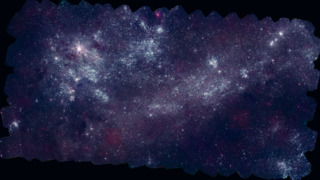Universe
ID: 11273
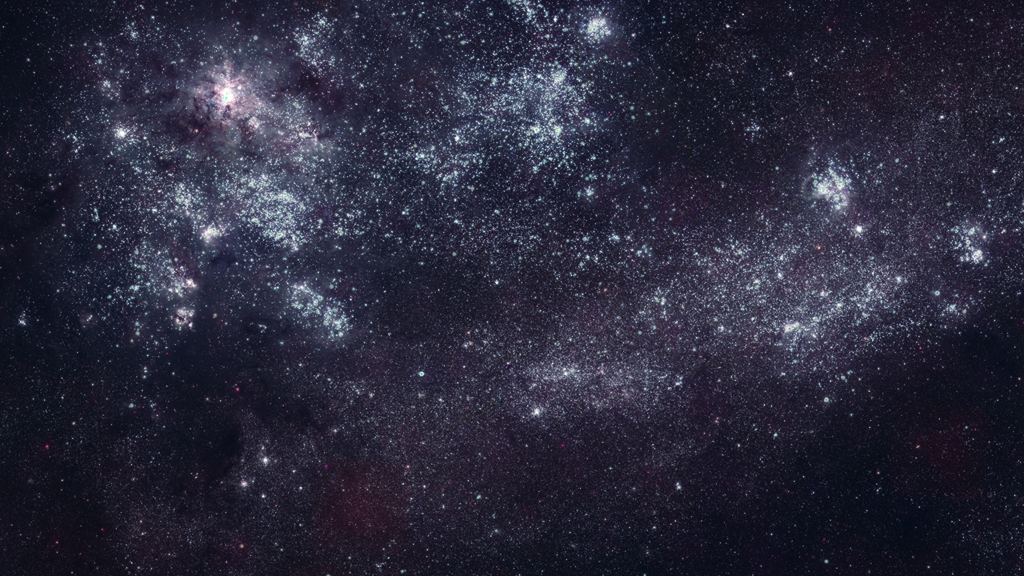
About 200,000 light-years away, two small and misshapen galaxies orbit our own. Known as the Large and Small Magellenic Clouds, or LMC and SMC for short, they are the Milky Way’s closest neighbors, visible from Earth’s Southern Hemisphere as faint, glowing clouds in the night sky. Now, we can explore the breadth of these galaxies with the best ultraviolet view ever created. Astronomers wanted to view the LMC and SMC in ultraviolet because that light removes the distraction of normal stars like our sun, revealing only the hottest stars and star-formation regions. To create the mosaics, scientists stitched together thousands of individual snapshots taken by the Ultraviolet/Optical Telescope on NASA’s Swift satellite. Such detail allows us to study the evolution of each galaxy’s young stars in a single picture—an option that’s not available for own galaxy, which we must view from the inside. Watch the video to learn more.
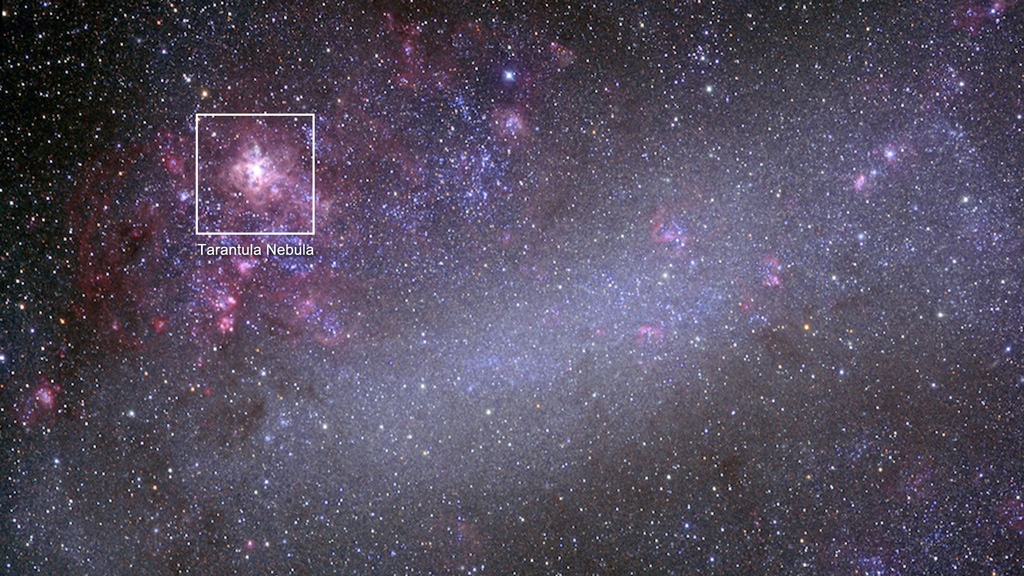
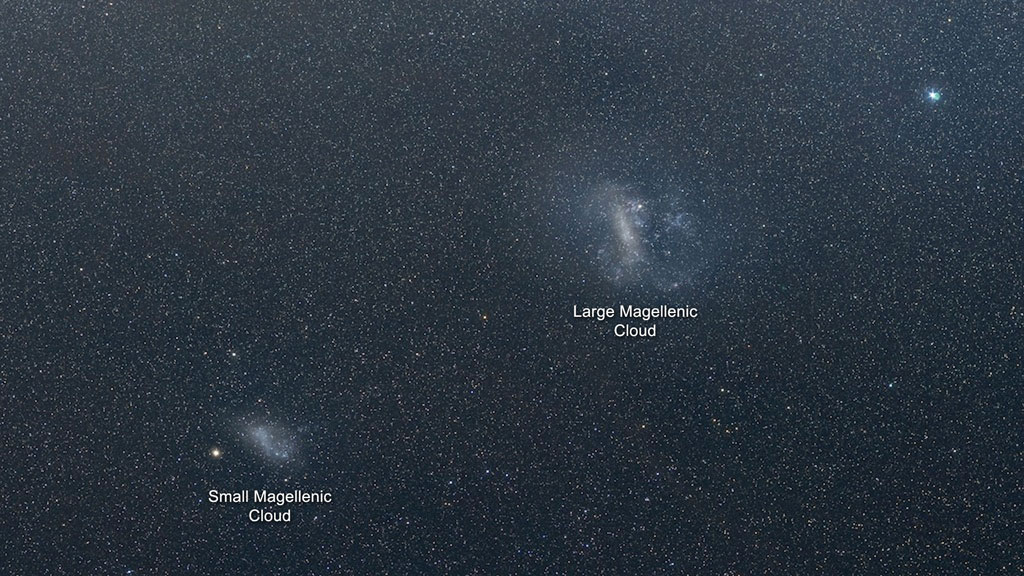
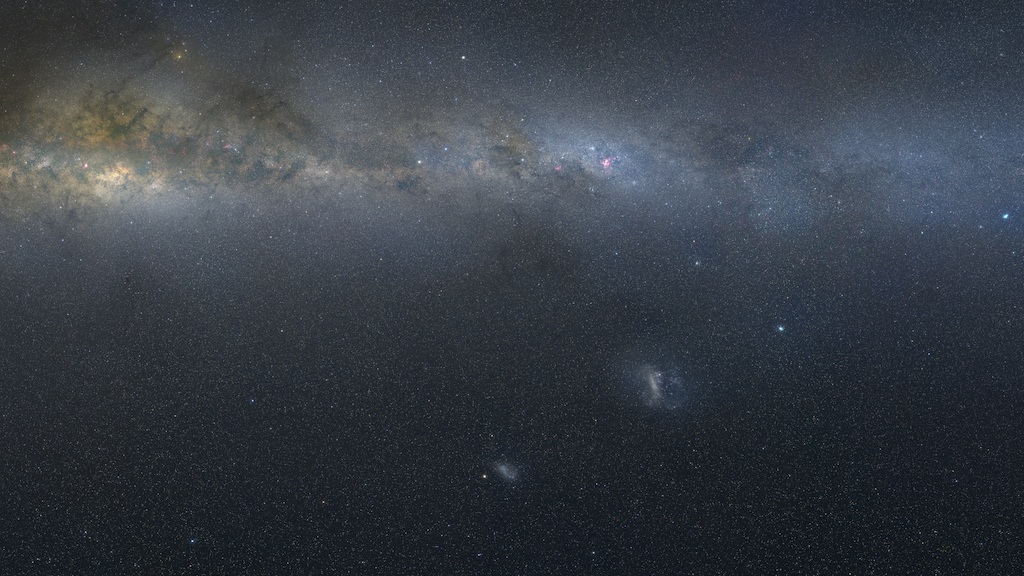
Portrait In Ultraviolet




Related Story
For More Information
Story Credits
Visualizer/Animator:
Scott Wiessinger (USRA)
Video Editor:
Scott Wiessinger (USRA)
Narration:
Francis Reddy (Syneren Technologies)
Narrator:
Stefan Immler (UMCP)
Producer:
Scott Wiessinger (USRA)
Lead Scientist:
Stefan Immler (UMCP)
Lead Writers:
Aviva H. Rutkin (USRA)
Francis Reddy (Syneren Technologies)
Scott Wiessinger (USRA)
Video Editor:
Scott Wiessinger (USRA)
Narration:
Francis Reddy (Syneren Technologies)
Narrator:
Stefan Immler (UMCP)
Producer:
Scott Wiessinger (USRA)
Lead Scientist:
Stefan Immler (UMCP)
Lead Writers:
Aviva H. Rutkin (USRA)
Francis Reddy (Syneren Technologies)
Please give credit for this item to:
NASA's Goddard Space Flight Center
UV light images courtesy of NASA/GSFC/Swift/S. Immler and M. Siegel, Penn State
Visible light images courtesy of Axel Mellinger, Central Michigan University
NASA's Goddard Space Flight Center
UV light images courtesy of NASA/GSFC/Swift/S. Immler and M. Siegel, Penn State
Visible light images courtesy of Axel Mellinger, Central Michigan University
Short URL to share this page:
https://svs.gsfc.nasa.gov/11273
Keywords:
SVS >> Astrophysics
DLESE >> Narrated
SVS >> App
NASA Science >> Universe
https://svs.gsfc.nasa.gov/11273
Keywords:
SVS >> Astrophysics
DLESE >> Narrated
SVS >> App
NASA Science >> Universe
